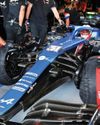
Motor racing has undergone a dramatic change in the past two decades. Breeding grounds for young engineering talent such as Lola and Reynard have closed in the UK, racecar builders such as Van Diemen have been soaked up by larger companies while, at the other end of the spectrum, motor manufacturers are unsure as to what will be the next propulsion fuel, and are therefore cautious about making an investment in any race series, particularly one featuring immature technology such as hydrogen or electric.
In the feeder formulae, standardised parts reduce the variety of component suppliers, while long homologation periods for top-level cars has rather limited the options. Unsuccessful applicants for a tender are locked out for years, rather than being given the opportunity to develop something better and go back to the market.
For a young engineer looking to start a career in motor racing, the market is certainly different to how it was at the turn of the century. Some would argue the companies that receive applications are more robust and able to employ, while others argue that variety is key to the future of racing.
Even a job opportunity at a race team has limited options. Previously, an engineer might have access to a variety of areas within a race team, whereas now specialist knowledge is far more attractive. Such large teams that exist in Formula 1 mean the option to work on multiple parts of the car is a thing of the past.
Under the presidency of Jean Todt, now nearing the end of its final term, the FIA’s push for the highest possible technology in international motorsport has increased pressure on manufacturers, teams, and suppliers to target their racing programs towards a predefined goal.
Employment opportunity
This story is from the August 2020 edition of Racecar Engineering.
Start your 7-day Magzter GOLD free trial to access thousands of curated premium stories, and 8,500+ magazines and newspapers.
Already a subscriber ? Sign In
This story is from the August 2020 edition of Racecar Engineering.
Start your 7-day Magzter GOLD free trial to access thousands of curated premium stories, and 8,500+ magazines and newspapers.
Already a subscriber? Sign In
Talk the torque
More thoughts on in-wheel motors and their effects on twisting force
Rolling about
An explanation of the limitations of a previous load transfer article, bringing jacking forces into the mix
F1 breaks schedule records
The FIA has confirmed no fewer than 23 races on the 2022 Formula 1 World Championship schedule, the highest number of grands prix ever to be held in a single season, and that has led to criticism from some teams that will be on the road for eight months.

Under pressure
Toyota may have finished first and second at Le Mans this year, but the effort required to overcome a fuel delivery problem and finish with both cars was Herculean
Physics at work
Dutch company, Intrax, offers Racecar Engineering an insight into the technologies it employs to optimise its suspension products
Williams' 2030 ambition
Williams Racing has committed to becoming climate positive by 2030 as part of an all-new sustainability strategy.
Diff'rent strokes
Racecar looks at the different types of mechanical differential, their benefits and limitations
Das Boot
A curious Twitter exchange fired up a unique, hydrogen-powered, cross-country project that will contest the Baja 1000 in November 2022

Air born
Every racecar engineer's dream is a blank sheet of paper design. When Hoonigan and Subaru approached Vermont Sportscars about building the next generation of Gymkhana racer, that's just what the company was given

Remote control
Called variously ‘virtual garages’, ‘mission control’ or ‘race support rooms’ is the future of race engineering sitting in the warm back at HQ?